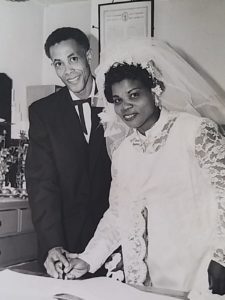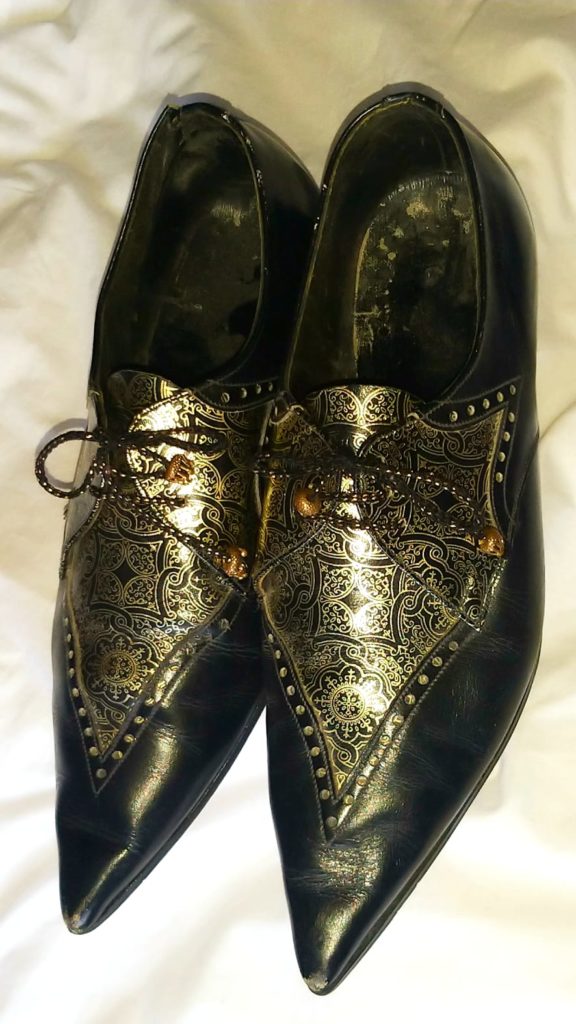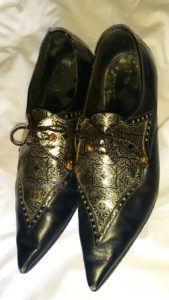The Wedding Shoes
by Ann Alphonse


When we were little my sister and I would love to get dad’s wedding shoes out of the box to giggle at when playing dress up. They are black leather, pointed dress shoes, with a filigree design in gold on either side of the laces. They had overly gold stamped embroidery in contrast to the sensible boots and shoes he wore to work. To us they represented our parents’ lives, before we were born. As children whose past only went as far back as the ‘60s – those shoes were antiques to us!
It was not until we were much older that we realised our parents had had a life before living in the UK; that in fact to our parents, their wedding represented their future, our future, and the lives they were now making.
They never considered themselves as immigrants. That was a word used by others. As far as the West Indians of the 50s and 60s were concerned, they were British and had been invited to the UK to help rebuild the country after the war.
Young men and women saw moving to the UK as an opportunity to make money to support their parents and siblings ‘back home’. They were told there were jobs and opportunities for all. For many the idea that they would spend the rest of their adult lives in the UK was not even considered, they saw it as something temporary. The reality of menial jobs, costly accommodation and restricted opportunities meant that for many the idea of returning home to live, would literally take a lifetime of saving on their initially low wages.
It took my parents quite some time to save for their wedding, on the wages they earnt from working in a factory and hospital, to pay for the clothes and food needed to celebrate with friends and family. Like all migrants all over the world, a wedding within the community, allowed everyone to share in the hope and dreams of a new life and new opportunities. Whilst at the same time it allows them to fill the loss of ‘home’ with familiar food, music and customs.
It is hard for me to imagine what it must have been like for someone in their 20s or 30s boarding a ship for 3-5 weeks, to sail to quite literally the other side of the world; to an unfamiliar country in the hopes of making a new and better life.
For my dad, those wedding shoes were the reason he made that journey – on that one day, dressing for his wedding those shoes came to symbolise the beginnings of that better life. How important that day was, and how proud my dad was of making a new life, can all be answered by the fact that he kept his wedding shoes as a reminder.
My parents were not ‘Great Black Britons’ but their lives are one small piece in the picture of the contribution made by the Black community to the history of Britain. Black History Month provides the historical context for why my parents made the journeys they made to come to Britain. It also shines a light on Black figures who we are not taught about at school and who have been overlooked in favour of white contemporaries, such as Mary Seacole. The British Jamaican nurse and businesswoman, who cared for the sick and dying during the Crimean War alongside Florence Nightingale, and was voted the greatest Black Briton in 2004.
This Black History Month I have loaned my dad’s shoes to the Bucks County Museum for visitors to see and learn about his story.
The Bucks County Museum would like to tell more stories like mine about the wider communities it serves. If you would like to get involved please email community@discoverbucksmuseum.org.





